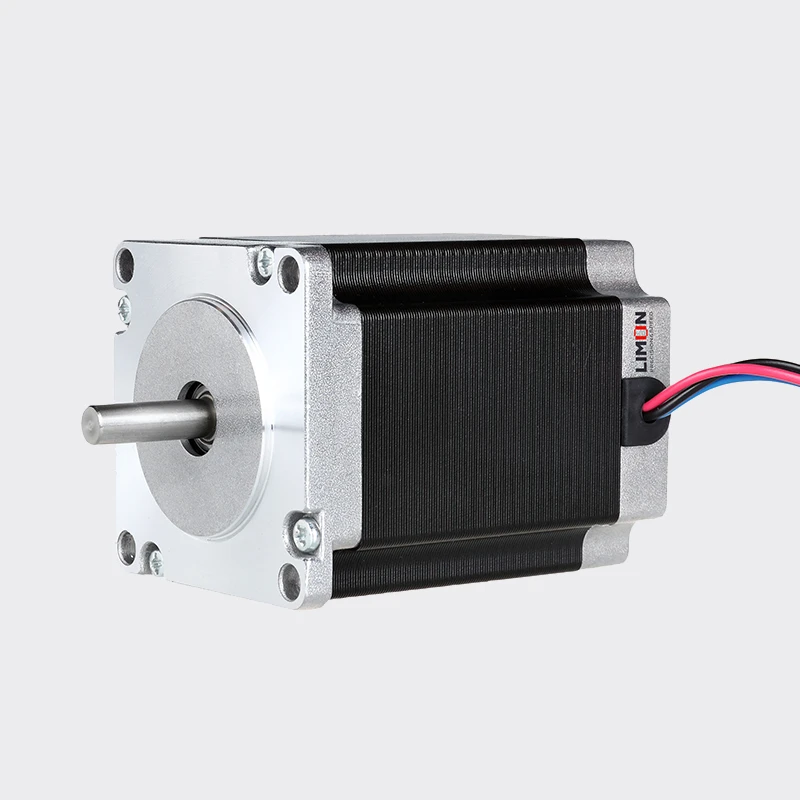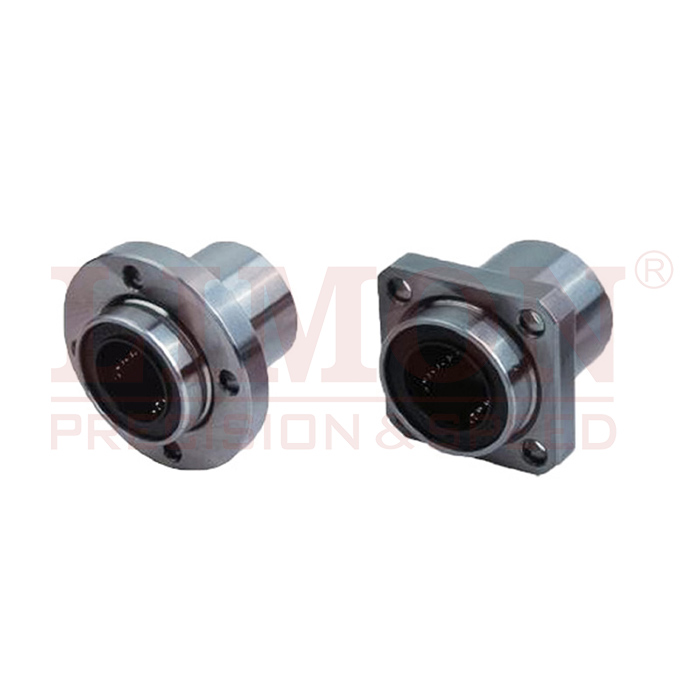Choosing the wrong motor leads to system inefficiencies, missed tolerances, and costly redesigns. Understanding stepper vs servo motors helps you engineer with accuracy and confidence. Here’s how to get it right.
Stepper and servo motors differ in control method, accuracy, torque, and feedback. Choosing between them requires evaluating motion profile, precision needs, and power efficiency in your application.
Explore the technical and practical trade-offs in this motor comparison guide.
Introduction
When designing a motion control system, engineers often face a critical decision: Stepper Motor or Servo Motor? Both have unique characteristics and serve important roles in precision automation, robotics, CNC machinery, and medical devices. The correct choice depends on several technical and operational factors, including performance, cost, complexity, and environment.
A Stepper Motor is an open-loop control device that moves in discrete steps, ideal for simpler motion needs without feedback. A Servo Motor, by contrast, is a closed-loop system that constantly adjusts itself based on feedback from an encoder, enabling dynamic, high-speed, and high-torque applications.
This article dissects their differences and guides you toward the optimal choice for your engineering application.


Key Differences Between Steppers and Servos
The main distinction between Stepper Motors and Servo Motors lies in how they control motion.
1. Control Mechanism
Stepper Motor: Operates using open-loop control. The motor controller sends pulses, and the motor takes corresponding steps. No feedback is required.
Servo Motor: Operates with closed-loop control. A feedback device (typically an encoder) constantly reports position, speed, and torque to the controller.
2. Accuracy and Resolution
Stepper Motors offer high positioning accuracy in static or low-speed operations due to their discrete steps (usually 200 steps/rev).
Servo Motors, while typically continuous in rotation, achieve better dynamic accuracy because of real-time correction from feedback.
3. Speed and Torque
Servo Motors are superior at high-speed and high-load applications, maintaining torque across a broad range of RPMs.
Stepper Motors deliver high torque at low speeds but lose torque significantly as speed increases.
4. Complexity and Cost
Stepper systems are less complex and generally cheaper to implement.
Servo systems require tuning, feedback wiring, and advanced controllers but offer long-term efficiency.
Understanding these distinctions is the foundation for choosing the right motor for your system’s motion control needs.
Stepper vs Servo in Action
Real-world performance further highlights the differences between Stepper Motors and Servo Motors. Let’s consider three key aspects:
1. Acceleration and Deceleration
Stepper Motors have limited ability to handle rapid changes in speed. Their abrupt stepwise motion can cause resonance and require damping techniques.
Servo Motors, with continuous feedback, allow for smoother acceleration curves, making them ideal for dynamic motion profiles.
2. Position Holding
Stepper Motors excel at holding a fixed position without oscillation, provided they are not overloaded. They don’t require feedback to do so.
Servo Motors maintain position via constant correction, which can cause “hunting” behavior—slight movements around the desired point.
3. Overload Recovery
When overloaded, a Stepper Motor simply stalls and loses position—without notification to the controller.
A Servo Motor, however, detects the overload via feedback and can respond by adjusting current, generating an alarm, or attempting correction.
These practical scenarios show that Stepper Motors are better for predictable, lower-load systems, while Servo Motors handle high-performance and fault-tolerant operations.
Power Consumption and Efficiency: The Energy Battle
In today’s energy-conscious engineering world, power efficiency is a critical consideration when choosing between a Stepper Motor and a Servo Motor.
Stepper Motors:
Constant current draw: Regardless of load or movement, stepper motors consume a steady current, leading to heat buildup even when idle.
Lower efficiency: Energy is often wasted in holding torque or unused steps.
Less dynamic load adaptation: Cannot adjust torque based on actual demand.
Servo Motors:
Variable current draw: Only draw current proportional to the actual load, which significantly reduces power use.
Higher efficiency: Especially in high-speed or high-duty cycle systems.
Regenerative braking: Some servo drives can feed excess energy back into the power supply.
In systems where energy efficiency and thermal management are priorities, Servo Motors offer a clear advantage.
Applications and Use Cases
Choosing the right motor also depends heavily on application demands. Below is a comparison of where each motor type shines:
Ideal Use Cases for Stepper Motors:
3D printers (precise, repeatable low-speed motion)
Open-loop CNC systems
Laboratory equipment
Small pick-and-place robots
Simple linear actuators
Why?
They’re cost-effective, reliable, and don’t require complex feedback systems.
Ideal Use Cases for Servo Motors:
Industrial automation (conveyors, robotic arms)
High-speed CNC mills and lathes
Textile and packaging machinery
AGVs and AMRs (autonomous motion systems)
Surgical robots and precision medical devices
Why?
They offer better dynamic control, energy optimization, and high torque performance.
Selection Criteria for Motor Choice
Selecting between a Stepper Motor and a Servo Motor requires careful evaluation of system-level requirements. Below are key criteria engineers must consider:
1. Precision
Choose Stepper if precise, small increments are needed without closed-loop feedback.
Choose Servo if dynamic accuracy during movement is critical.
2. Speed
Stepper Motors are sufficient for low to moderate speeds.
Servo Motors are required for high-speed, high-inertia loads.
3. Torque Requirements
Stepper Motors are optimal for high torque at low speeds.
Servo Motors maintain torque across a wider speed range.
4. Budget Constraints
Stepper systems are typically 30–50% less expensive upfront.
Servo systems may cost more but offer efficiency and long-term savings.
5. System Complexity
Stepper setups are plug-and-play for many applications.
Servo systems require tuning, feedback loops, and more sophisticated controllers.
6. Load Variability
If the load varies or must respond to external forces, go with Servo Motors.
If the load is fixed and predictable, Stepper Motors are sufficient.
Comparison Table: Stepper Motor vs Servo Motor
| Criteria | Stepper Motor | Servo Motor |
|---|---|---|
| Control System | Open-loop (no feedback required) | Closed-loop (requires feedback encoder) |
| Position Accuracy | High at low speed, discrete step resolution | Very high accuracy with dynamic correction |
| Speed Range | Best at low to medium speeds | Excellent across wide speed ranges |
| Torque Characteristics | High torque at low speeds; drops off at high speeds | Consistent torque across speeds |
| Efficiency | Lower; consumes constant current | Higher; adjusts power to actual load |
| Complexity | Simple setup, minimal tuning | Requires tuning, feedback wiring, drive settings |
| Cost | Lower upfront system cost | Higher initial cost, but energy savings long term |
| Maintenance | Low; fewer components | Moderate; more parts and electronics to manage |
| Ideal Applications | 3D printing, light-duty CNC, pick-and-place, basic robotics | Industrial automation, high-speed CNC, robotics, medical systems |
Summary
Stepper and servo motors each have unique strengths—choosing wisely ensures optimal precision, efficiency, and reliability in your motion system.For further questions please contact [email protected]




